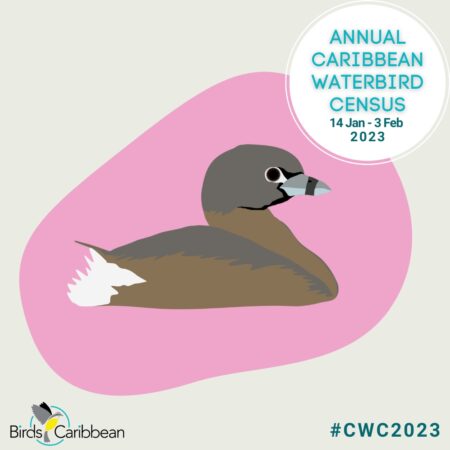
This year we have featured seven waterbirds in our Caribbean Water Census graphic! Find out more about each of these beautiful birds in our blog posts and on social media.
Meet the Pied-billed Grebe, another one of this year’s seven selected waterbirds for the Caribbean Waterbird Census (CWC)! It has the widest distribution in the Americas of any grebe, breeding from northern Canada through the West Indies and Central America to southern South America.
The Pied-billed Grebe can be distinguished from other grebes with its brown plumage, slightly darker above and more tawny-brown on the underparts and short, arched brownish-buff bill. During the breeding season, it sports the two-tone bill- bluish white with a black vertical band- that gives this bird its name! Males and females look alike but males are larger in size. Juveniles have striped faces with a dull orange-red bill.
They can be found in ponds, flooded agricultural fields and other non moving bodies of water like sewage ponds. This is because they mostly forage in open water, among aquatic plants capturing crustaceans, frogs, tadpoles, insects and fishes. They are very opportunistic feeders i.e. they will eat what is readily available. They also favor nest sites where the water is deeper than 9 inches, which allows for escape, feeding, and nest platform construction.
They are so well adapted to an aquatic lifestyle that when threatened they can stealthily sink out of view. They remain quietly hidden underwater with eyes and nostrils above the water, just like a crocodile! Or less gracefully, they might crash-dive, kicking water several feet into the air.
We hope you see these chunky swimmers on your CWC2023 count and if you do, don’t forget to add to your Caribbean eBird checklist.
CWC 2023 starts on Saturday January 14th and runs through Friday February 3rd. See below for detailed instructions and free downloadable resources to help you make the most of your waterbird counts and don’t forget to keep an eye out for Piping Plovers!








